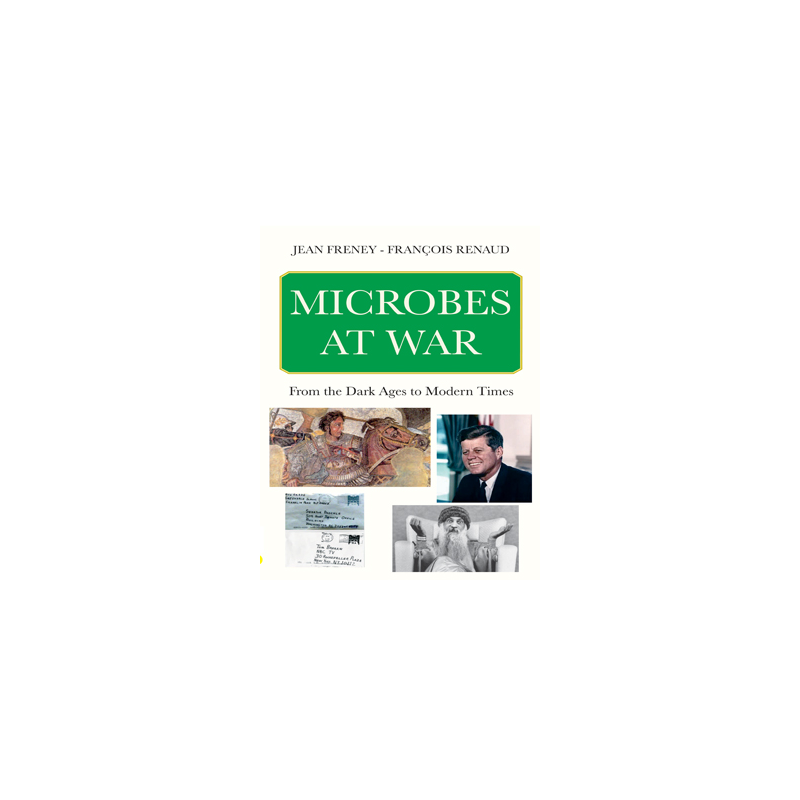



 Security policy
Security policy
(edit with the Customer Reassurance module)
 Delivery policy
Delivery policy
(edit with the Customer Reassurance module)
MICROBES AT WAR
From the Dark Ages to Modern Times
Jean FRENEY – François RENAUD
This book deals with the influence of infectious diseases on the development of historical events, but particularly political and military conflicts.
Humans discovered ‘bacteriological warfare’ ages ago. The siege of Syracuse, provides a particularly clear illustration of this phenomenon. Likewise, from time immemorial men have used human and animal corpses to infect wells and make water undrinkable. In the Middle Ages, for instance, black plague-infected corpses were catapulted in order to spread infection amid the enemy. During the eighteenth-century conflicts in North America, the English distributed clothes contaminated by the smallpox virus to Indians who supported the French.
Spontaneous or man-induced infections, such as the syphilis epidemic during the siege of Naples by the king of France, Charles VIII, or the English military fever during the Lutheran reform, have brought about significant historical upheavals and, one can say, unprecedented opportunities. The Great Famine, caused by the destruction of potato crops due to a fungal infection that was rife in Ireland in the course of the nineteenth century, eventually resulted in the rise to power of the first Roman Catholic president of the United States, John Fitzgerald Kennedy. The “Spanish” flu epidemic considerably altered the course of World War I.
*******************
Jean FRENEY is a university professor of microbiology at the Institut des Sciences
Pharmaceutiques et Biologiques in Lyon. He is also a hospital practitioner at Edouard Herriot Hospital in Lyon, France.
François RENAUD is an assistant professor in the Department of Biological Engineering at the Lyon Technical Institute. He is conducting bacteriology research at the Institut des Sciences Pharmaceutiques et Biologiques in Lyon, France.